Do you want to learn about Shark Attacks in Washington?
If you’re a beach person, you know how hard it is to resist the waters when the gorgeous sea is in front of you. However, it is sometimes best to ensure that where you plan to swim is a safe area. Almost thirty different shark species infest Washington’s waters.
Read on to learn all about them, as well as the recorded shark attacks in the state of Washington.

Movies have developed an unjustified fear of sharks in most people that we seldom pay attention to other sea predators. Even though there haven’t been any recorded shark attacks in Washington state for a pretty long time, it’s always best to stay cautious.
It is always best to avoid provoking any sea creature when going in the waters, whether swimming or surfing. Sharks generally do not bother you until you provoke them. Also, all shark species are not as blood-thirsty as movies portray.
Here, we will discuss the chances of shark attacks or interactions with their species.
Does Washington Have Shark-Infested Waters?

If you’re terrified of sea creatures, then know that Washington contains more than 25 shark species. However, the good thing is that not all sharks are predators and like to mind their own business.
Of course, like any living thing, they get hungry, and when they find food around, they will go after that. Unfortunately, the name “Shark” has become a sign of terror due to various movies. However, most shark species are not big enough to feast on humans.
So, the short answer here is: yes, Washington has shark-infested water. But please note that those sharks will not bother you unless you provoke them.
How Many Shark Species Are There In Washington?
According to the Shark Foundation, approximately 30 different shark species inhabit the waters off the coast of Washington State. Each of these species plays a unique and vital role within the regional ecosystems. However, it is a sobering fact that virtually every shark species known to humanity is currently facing the threat of extinction.
Now, let’s delve deeper into the fascinating world of the largest sharks found in Washington State.
#1 Salmon Sharks
Being strong swimmers, salmon sharks have broad tails with two keels. Salmon sharks can reach over 10 feet; however, they typically range between 6.5-8 feet. The ability of these sharks to control body temperature is well documented, as they can easily survive in cold waters.
The continental offshore seas, from the surface to at least 500 feet below the surface, are where this species is most widespread. However, it has occasionally been observed inshore, outside the breaker zone.
#2 Tiger Shark
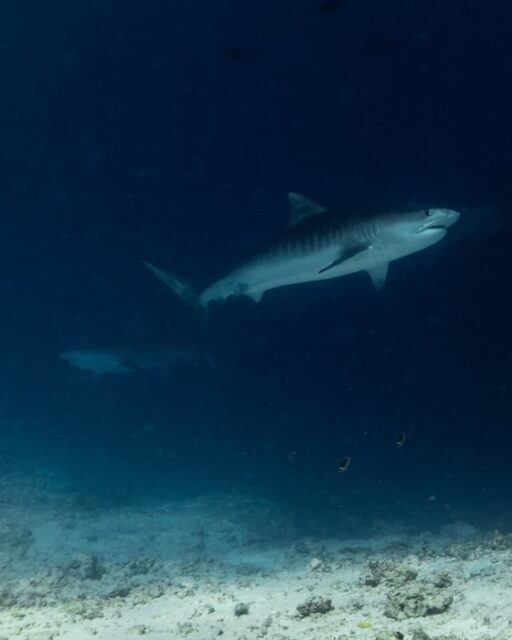
These sharks have short, wide, and powerful teeth that are extremely sharp. As they are carnivores, these sharks only eat meat. They are known for being extremely aggressive hunters and are believed to be one of the most violent shark species around.
In fact, it is listed as one of the top three angriest sharks worldwide. They are also known to attack people without warning – one of the causes they are deemed extremely lethal.
Due to the dark stripes on its bottom body that mimic the patterns of a tiger, it has the name “tiger.”.
#3 Great White Shark
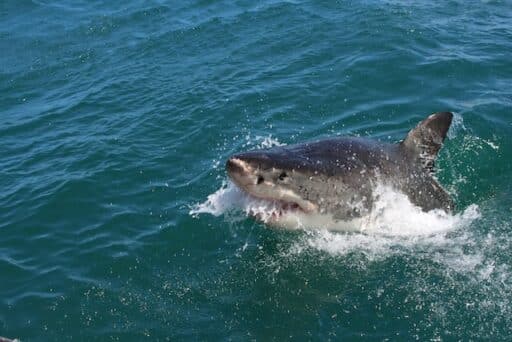
The white shark is another name for the great white shark. A newborn great white shark is around 5 feet long; when it grows, it could grow up to 20 feet long. The great white shark is a carnivore since it feeds on many other marine creatures, such as fish and seabirds.
It is a species with no known natural predators and feasts on humans more often than any other species. With a more than 70 years lifespan, this creature is one of the longest-living cartilaginous fishes.
#4 Dusky Shark

Requiem sharks include the dusky shark, which thrives in tropical and hot continental oceans worldwide. It can reach a maximum length of 11 feet and weighs between 350 and 400 lbs on average.
They are more susceptible to overfishing than certain other sharks because they have much slower growth and later maturation than most other sharks. Although dusky sharks are not harmful, huge adults can become aggressive if startled.
Although they have a sluggish growth rate, they at least have a lengthy lifespan. They are thought to have a lifespan of over 30 years.
#5 Cat Shark

The tiny-spotted catshark is a small shark species with dark streaks and patches covering its skin. The tiny catshark has a small mouth, huge cat-like eyes, and very scratchy pale cream skin. With curly tendrils emerging from the corners, they reach a length of about 3 feet.
Although many species of bottom-dwelling organisms are uncommon and poorly known, cat sharks have been discovered in all significant marine habitats in tropical and temperate zones.
The biggest family of sharks is the cat family, which contains about 160 species in 17 genera. Cat sharks eat tiny fish and invertebrates. There are not known to be hostile towards humans.
#6 Sand Tiger Sharks
Gray nurse sharks and sand tigers are other names for sand tiger sharks. They have a big body and a mouth full of pointed teeth that stick out in all directions regardless of whether their mouth is closed.
These are the only sea creatures that surface to breathe, not to swallow air. The shark may float still in the water while watching for prey because the air makes it more buoyant.
These fish are not particularly hostile toward people and only trouble humans if bothered.
#7 Blacktip Shark
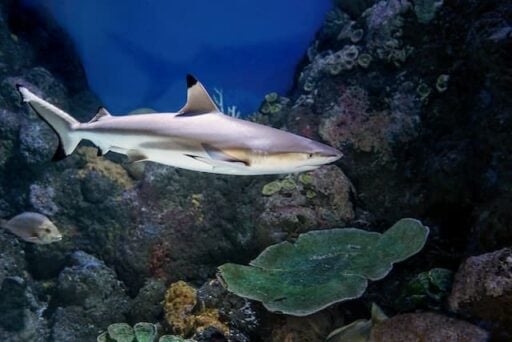
The name “blacktip shark” refers to the fin tips’ unique black markings. They can grow up to eight feet long and weigh between 66 and 220 pounds. The females of this species are bigger than the males; the longest female was measured at 6.8 feet long, although the average size is 5.5 feet.
Though not intentionally, these species are most likely to bite humans. Blacktip sharks are typically suspicious of people, but when they smell food, they can become aggressive and attack several people.
#8 Basking Shark
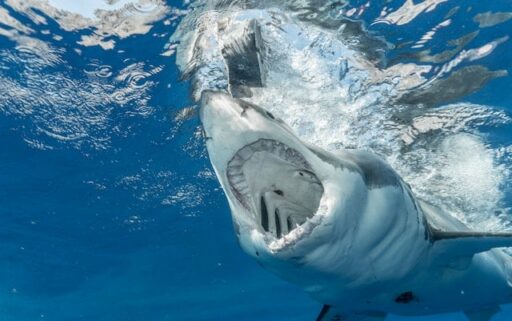
The basking shark, one of the three species that consume plankton, is the second-largest shark after the whale shark. Whale sharks are the only species larger than adult basking sharks – which can grow up to 30 feet long.
Despite its size, the species is a filter feeder, which means that rather than consuming large marine creatures, it feeds on plankton by filtering water. These sharks may breach, i.e. jump completely out of the water, despite being big and slow.
Basking Sharks are a passive species since they avoid ships and human contact, unlike Great White Sharks.
Reported Shark Attacks In Washington

Washington State’s coastline is generally considered safe when it comes to shark attacks, with only two reported incidents in its history. Here are the details of these reported shark attacks:
Most Recent Reported Shark Attack in Washington:
In 2017, a series of nine documented shark attacks occurred along the West Coast, spanning from California to Washington. All of these attacks were believed to be the work of great white sharks. Fortunately, none of these incidents resulted in any injuries to humans. However, a great white shark did damage a man’s surfboard during one of these encounters.
First Recorded Shark Attack in Washington (20th Century):
The first confirmed shark attack in the 20th century for Washington State occurred on Wednesday, April 12, 1989. The victim of this incident was a surfer named Robert Harms, who was out on his purple surfboard approximately 100 meters off the coast of Pacific Beach near Aberdeen in western Washington.
During his surf session, Harms noticed a large gray fish near his surfboard, followed by a swirling movement in the water. Realizing the danger, he quickly regained his composure and started paddling back to shore. As he attempted to escape, the shark grabbed his arm, prompting him to instinctively pull his arm away and push the shark away.
Upon reaching the shore, Harms removed his wetsuit to tend to the numerous wounds sustained during the encounter. This incident marked a rare and significant event in the history of shark encounters along the Washington State coastline.
Types of Shark
The name “Shark” itself is enough to scare most people, thanks to movies like “The Jaws” and “Deep Blue Sea,”. However, as discussed already, not all sharks are predators; here, we will discuss the species in detail.
Sharks With Weird Shapes
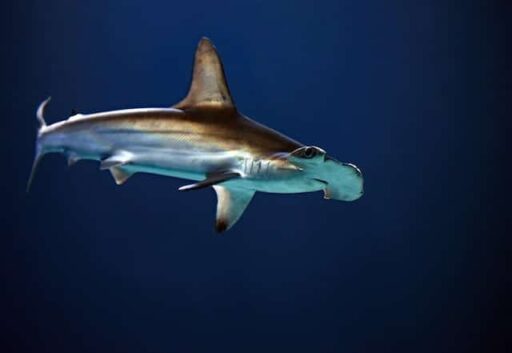
You can find the Pacific Ocean’s scalloped, bonnethead, and smooth hammerhead sharks close to the state of Washington. Thresher sharks gather and stun small bait fish like sardines and anchovies, which constitute their main food source.
These swiftly swimming sharks can weigh up to almost 1,000 pounds, although they are unlikely to harm people.
Even though they are harmless, you should keep your distance if you come across them.
The Middle Class
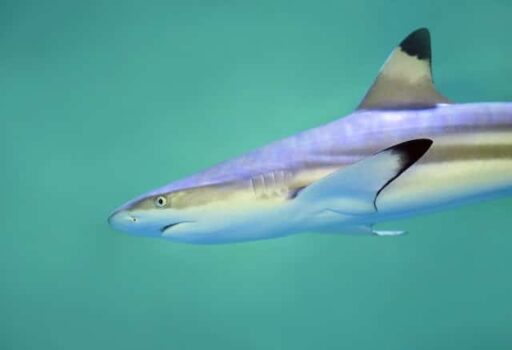
Sand tiger sharks with few teeth are described as “middle-class sharks.” They prefer deep waters close to the continental slope and reside at the bottom. Blue sharks are medium-sized fish that grow to a maximum length of 9 feet.
Blacktip sharks, also a middle-class shark, typically grow under 6 feet and eat fish and tiny sharks. Even though they frequently inhabit the vast ocean far from land, they could potentially harm people.
Small Sized
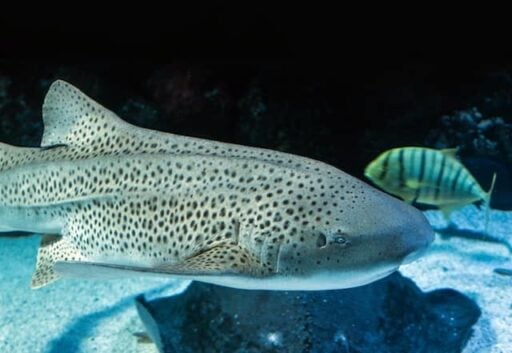
Indeed, the name says it all—small-sized sharks pose no significant threat to humans, as they tend to avoid confrontations with larger creatures. Here’s some information about these diminutive sharks, which include dogfish, catfish, and leopard sharks:
1. Spiny Dogfish:
- Spiny dogfish are slow-moving and typically found on the ocean floor.
- They reach a maximum length of around 3 feet.
- Remarkably, they are among the most widespread and extensively studied shark species worldwide.
2. Leopard Sharks:
- Leopard sharks are relatively small, with a maximum length of 4 to 5 feet.
- They are known for their distinctive spotted patterns.
- Just like their small-sized counterparts, they pose no threat to humans and are considered non-lethal.
3. Cat Sharks:
- Cat sharks are a group of small, lesser-known sharks that predominantly inhabit deep waters.
- They are bottom-dwelling creatures.
- The coastal waters off Washington are home to several species of deep-water cat sharks, adding to the diverse marine life in the region.
These small-sized sharks play their own unique roles in the ocean ecosystem, contributing to the rich biodiversity of Washington’s coastal waters.
Gentle Giants
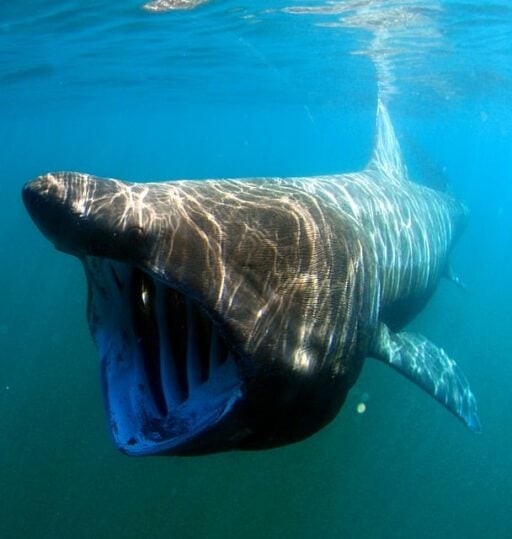
The name reveals it all. Gentle giants prefer to be gentle with humans and other moving creatures. When talking about “gentle giants,” only basking sharks are the ones with huge bodies and least bothered by humans.
The main reason is that they are too lazy to swim after prey and prefer to go after easily available food. They are predominantly filter feeders and do not consider people to be a source of food.
Sea Monsters or Predators
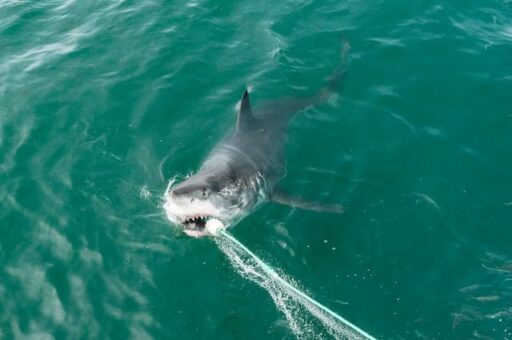
These sharks belong to the carnivore category and are natural predators. Blue sharks, great white, and tiger sharks are known as sea monsters. The two biggest predatory species in the region are tiger sharks and great white sharks.
Great white sharks can grow to be at least 20 feet long, and they devour a lot of marine mammals, such as seals, dolphins, and whales. Although salmon and dusky sharks cannot get as big as tiger sharks or great whites, they are nevertheless potentially harmful to humans.
Also, they can grow to be 8 to 12 feet long. Tiger sharks are almost as long as great white sharks, but they feed on a larger range of animals, such as fish, turtles, and birds.
What To Do When Faced With A Shark?
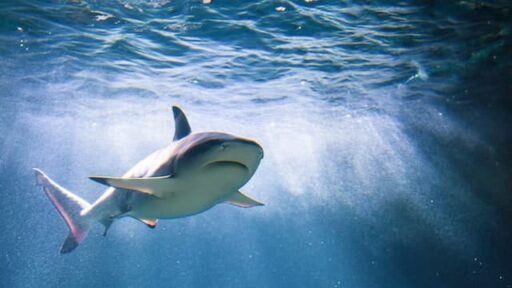
It is best to avoid interaction with these giant sea creatures because the research we have is something that humans know, not sharks. Consequently, the fish can panic if threatened or provoked unnecessarily.
It would be ideal if you’re boating or surfing in the water with people and lifeguards around. However, avoid going too far into the sea on your own as it can sometimes be dangerous. If you ever come across a shark, follow these tips.
Safety Tips
- If sharks are in the area, stay out of the water. If already in the water, leave the water slowly and gently.
- Avoid wearing brightly colored or highly contrasting apparel since sharks have excellent contrast vision.
- Sharks can detect splashing low-frequency sounds and may investigate to determine whether a fish or another prey is around. So, avoid splashing too much, especially in one and the same area.
- Avoid fishing in recognized sewage or effluent-filled sites and those frequented by commercial or sport fishermen – especially if there are indications of baitfish or feeding activity.
- Avoid swimming in the sea around dusk or throughout the night, as this is the time when many sharks are active and feed.
- Since sharks are more susceptible to approaching a lone swimmer, stick with a partner and avoid venturing too far from shore. Being far from land also cuts you off from any emergency help.
How Likely Is It to Survive a Shark Attack?

The rise of technology, particularly social media, has led to a surge in the documentation of both notable and ordinary encounters with sharks.
Enhanced emergency response times, advancements in medical practices, and improved first aid techniques have substantially improved the chances of survival in the event of an aggressive bull shark attack. What were once potentially fatal incidents can now be managed more effectively, thanks to progress in the treatment of severe trauma.
What To Do If a Shark Starts Following You?
First, try not pulling off stunts like going in “no-go zones” to avoid a meetup with a shark; however, if you still find one’s attention, follow these tips to stay safe.
Stay Calm
It would be the most difficult thing to do when a shark is circling or following you, but panicking will get you in more trouble. So, try your best to maintain your calm. Splashing around won’t do anything but pique the shark’s attention and make it more likely that it will bite.
Swimming and splashing around invite the shark attempt an exploratory bite.
Keep Watching It
Since sharks are apex predators, turning around to face one while it circles you won’t make it any more comfortable than if it can approach from behind. Keep your head swiveled while the shark moves around you, and make an effort to keep eye contact.
If you’re surfing, follow the shark with your boards to alert it to your presence. Pose your body so the shark can see you follow it, and know you are there. Then carefully climb back up to a sailboat or the shore, where you can depart.
DO NOT Act Dead
Sharks usually hunt to feed their hunger if not provoked. So, if you find one is going to attack you, know that playing dead won’t work. Use whatever you have in your hands in these situations as a weapon to fight for life.
Aim the area around the mouth, like the nose or eyes. Also, remember that sharks have pretty sensitive gills and attack them. A well-placed shot to the gills will work best and cause the fish to flee.
Wrapping Up on shark attacks in Washington
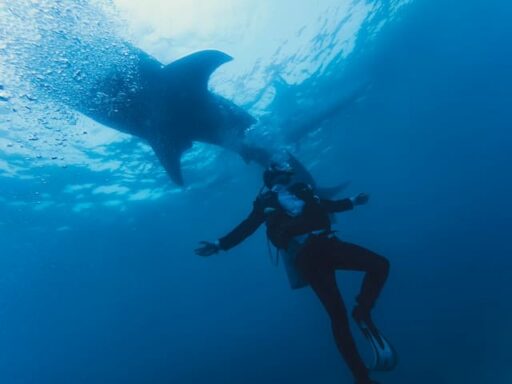
Washington is a state with few recorded shark attacks. The state’s waters are great for sharks and contain up to thirty species.
Despite the large number of sharks infesting the water, there have only been two reported shark attacks in Washington in 1989 and 2017. Both incidents happened in Grays Harbor on the state’s west coast.
We suggest not going to the unfamiliar or lonely parts of the sea and staying where people and lifeguards are around to ensure your safety.
Thank you for reading this article! There are many many more states in the United States that face shark attacks, continue reading about Shark Attacks in Oregon.
- Magpie Bird Is Reunited with Her Dog Best Friend - April 24, 2024
- Dog Saves Another Dog From Drowning in Fish Pond - April 23, 2024
- Man On Motorbike Rescues Cat From Highway - April 23, 2024



